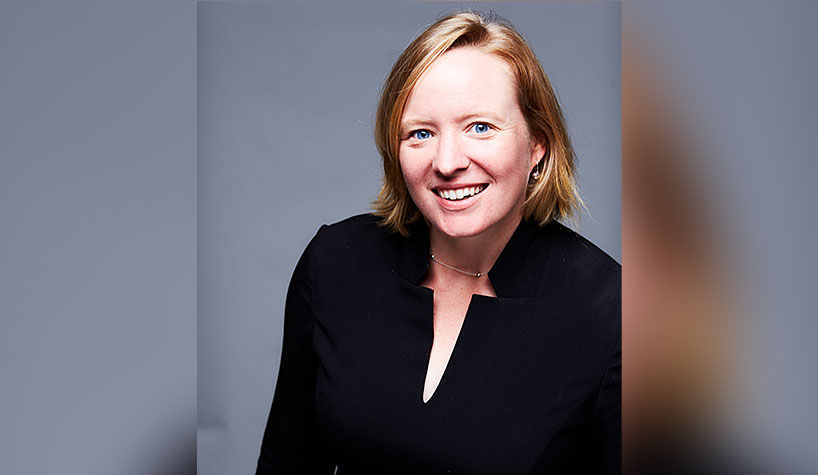By Patricia Shea
As we move into 2021, many of us are looking forward to the new year with the hope of new possibilities that will turn the tide for group business. Now is the time to become resolute in building a solid selling workout routine so when recovery changes our pace from a marathon to a sprint, your team will be ready.
If we have learned anything in the past 10 months, it is that employees get ideas and inspiration from each other. The inability to meet, collaborate and ideate as a group has substantially impacted businesses during this disruption.
Getting back to the business of business is at the heart of the meeting and events industry. Meetings will be back sooner than we think, so if your sales team hasn’t begun to stretch those selling muscles, now is the time to get started.
Small Meetings Combat the Rise of the ‘Zoombie’
As we watched businesses try to facilitate work-from-home scenarios, the hospitality industry pivoted to accommodate virtual and hybrid events, but we have seen that the value is not the same. Engagement was a challenge and keeping people active with gamification or “topic rooms” did not have the same benefit as live networking, particularly in a conference/trade show scenario.
Many organizations, big and small, turned to video conferencing tools to pull team members together to meet virtually as a temporary solution. While initially unique, it quickly became tedious and tiresome resulting in online meeting burnout, or “Zoom fatigue” and the creation of “Zoombies.”
To alleviate this issue, smaller groups have begun to come together in hotel meeting rooms to ensure a safe environment. This allows teams to get back to meeting without the annoyance of looking at a screen for hours at a time, or the need to properly prepare and secure corporate offices against exposure.
Regardless of the reason, numbers show us that meetings are happening now. In fact, even prior to 2020, the majority of meetings were 50 attendees or less. So, if your hotel has the capacity to host smaller, more intimate meetings, 2021 may be a golden year for you.
Exercise Your Sales Muscles
2021 will call for a more streamlined workout routine for sales teams, and those who realize the need for new sales strategies will come out on top. The reality for many hoteliers looking to book group business is that their sales staff had become reactive, waiting for the next RFP to hit their email inbox. Driving a sales process is not simply difficult; it is foreign to today’s hotel sales teams. The time is now to pivot from this complacent mentality to a solid, hunter-style sales strategy.
Successful teams are learning there is a need to balance outreach between the customers they know and the ones with new potential. While a softer touch in our outreach efforts has been necessary in the past months, the new year calls for the next phase of selling.
As we move further into 2021 and the hope it brings with the distribution of a vaccine, companies are beginning to remove travel restrictions. It is clear the need to come together to conduct business is stronger than ever. That being said, now is the time to move beyond relationship building and turn to the strategy of proactive selling to help your sales team become smarter or determine how your hotel can do better.
There is a difference between sales calls with a purpose and friendly calls to check in, or to share fun tips. When reaching out to new prospects, it is great to ask how things are or how business is doing, but beyond that, now is the time to weave into the conversation key investigative questions such as “What does your 2021 and 2022 meeting landscape look like?” or “Have you started thinking about your 2021-2022 meetings?”
Even stronger outreach includes information you know about past events they have planned or the locations or hotels they have favored—allowing your team to position themselves as trusted advisors. This strategy will help remind them that your hotel is willing to learn and make adjustments to suit their needs. It will also help keep your property at the top of their call back list.
Set New Metrics
Providing solid, realistic sales metrics will be a key driver to success. Amidst the difficulty of the past few months, some sales directors have shied away from implementing new metrics. Many have smaller teams and feel it may seem too harsh to make them meet defined sales goals. This concern has led to a lack of monitoring or setting solid goals which in turn has likely left your sales team out of shape and ill-prepared for the new normal.
Today is not the same as yesterday, so your sales teams will need new goals, or KPIs, in order for management to better monitor their efforts. This will help you change course if your teams are not meeting those goals.
Define new metrics that include both soft and hard calls, such as an expected number of conversations with prospects, and an expected number of opportunities added to the pipeline. Identify your hunters and/or train your sales team to become hunters, then develop a step-by-step plan for conducting outreach.
Next, sales leaders should look to identify and track exactly who their sales staff is calling. If they are calling the same accounts as always, without a healthy mix of new prospects, they are essentially fishing in a pool that is too small for them to succeed.
Assign a Personal Trainer
We all know that if we go to the gym and only run on the treadmill, we won’t see results in our upper body. To see results and develop a successful workout routine requires a personal trainer that focuses on your specific body type and health goals. The same is true for sales.
Does your team have a personal trainer-type mentor? Is that person able to train or retrain your team to get back to the basics of selling? Even more important, do they know how to proactively sell? If you expect them to run a marathon, then they need to be training now.
Ensure your team has a blend of touching existing clients and reaching out to potential leads. Determining what that blend looks like will be critical for a successful sales team. If they aren’t actively working the phones, you aren’t closing deals. However, if they haven’t been given a refresher on how to find new accounts, how to cold call or make the first call, is it fair to expect them to produce results?
Getting Your Team Into Selling Shape
Assigning that personal trainer will be key in getting your team into selling shape. Below are some key objectives needed to successfully win new business:
- Identify specific industry segments that have begun meeting. Is the local dental association planning regional meetings? Perhaps local law firms need to connect, or tax groups must meet to review new regulations. Regardless of the industry, there are companies that may not want to use their own offices because they either don’t want to go to the expense of prepping a corporate meeting space, or don’t have a meeting space large enough to accommodate the 6-ft. rule. This is your team’s opportunity to step in with a solution. Once you’ve provided the guidance on how to pick up the phone and take action, you will need to give them the tools they need to get past the gatekeeper and identify who the right contact is at a target organization. Failure to do so may result in too much time spent doing research to get to the key decision maker.
- Assign specific call metrics and integrate them into your calling strategy. Take a blended approach to sales calls. You’ve identified specific industry meeting opportunities by asking the right questions, such as “What are your meeting requirements?” Next determine the number of calls that should be made to that industry per week, for example “call these 50 law firms.” Get the relevant details on the meeting behaviors of these companies, including the type/size of meetings they have and where they have met in the past. Finally, integrate soft calls, touch-base calls and follow-up calls into the mix to determine the total number of calls that need to be made per week.
- Create a call plan and monitor success. Once you’ve determined who should be called, create a call plan that lays out your specific criteria. Ensure everyone is on the same page and meet on Mondays to level-set expectations and on Fridays to check on results.
- Schedule time for selling. Plan your work and work your plan. If your team doesn’t set aside specific selling times on a daily basis, chances are they will find other non-selling tasks to fill that time. Selling needs to become a habit they plan for every single day.
Stick With It and Work Those Muscles
Getting back to the basics of identifying new target accounts, fostering the hunter mentality and tracking the results will be key to closing the deals and increasing your group revenue. We know that smaller, more intimate meetings are happening today and will likely be the new normal into the near future.
So, what are you waiting for? Get back into the routine of selling and close the deal. The marathon is coming. Is your team ready?
Patricia Shea is VP customer success at Knowland. She leads all customer engagement and sales endeavors at the company, including strengthening and supporting partnerships with current and prospective customers. She is also responsible for introducing Knowland’s newest product and service offerings to market.
This is a contributed piece to Hotel Business, authored by an industry professional. The thoughts expressed are the perspective of the bylined individual.



